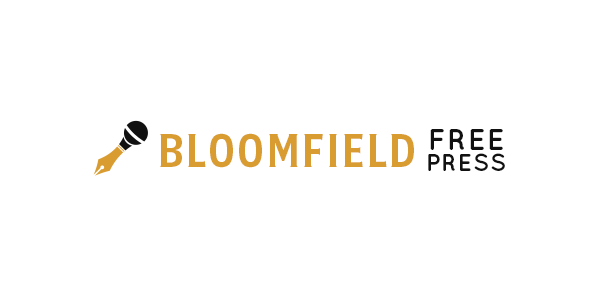After you’ve found the right tenants for your rental property, you’ll need to offer a lease agreement for them to sign. Writing a lease agreement is a critical step in the rental process, as it allows you to outline the rights, responsibilities, and terms of your tenant’s lease. But, how do you write a lease agreement effectively?
In this Redfin article, we’ll cover how to write a lease agreement in 14 steps and why it’s an important document to have. Whether you’re renting your home in Minneapolis or renting your condo in Orlando, read on to find out the steps for writing a lease agreement.
What is a lease agreement?
A lease agreement is a legally binding document that outlines the terms of your tenant’s lease. It includes the monthly rental payments, lease duration, rules, and additional regulations (ex. no-smoking areas, quiet areas, whether pets are allowed, and notice of entry). Lease agreements cover all the expectations for you and your renter, which can help prevent issues down the line.
1. Fill out each party’s information
First, you’ll need to add the following information to the document – name, phone number, email address, and physical address. You’ll need this information for yourself, any co-owners of the property, all tenants included on the lease, and any property managers. If there are any additional people living on the property who aren’t paying rent, you need to include them as well.
2. Add description of property/unit
When writing a lease, you need to have a description of the property or unit that you’re leasing. Whether you’re leasing a single-family home or a multifamily unit, the information you add will be similar. Here’s what you need:
- Property’s address
- If the home is part of an HOA
- Any existing issues or damage to the property
- Items like appliances, furniture, and decor that remain in the home
Any appliances listed in the property description are your responsibility, meaning you’ll need to arrange repairs or maintenance.
3. List out all utilities and additional services
The next section should include all utilities and additional services, and who is responsible for paying. Examples include:
- Electricity
- Natural gas (if applicable)
- Heating and cooling (HVAC)
- Water and sewer
- Trash removal
Some other services include internet, landscaping, and pool maintenance. However, there may be additional services that are not listed above that you need to include. You should specify which, if any, utilities are included in the rent price. If no utilities are included, list out where and how your tenant will need to pay for these services.

4. Include lease duration and type
The lease agreement will also include the type of lease and the lease duration. There are two types of leases: fixed-term or month-to-month. A fixed-term lease has a set end date, most often 12 months. A month-to-month lease automatically renews at the end of each month, unless a tenant gives notice to vacate or you give renters proper notice that the lease is ending.
5. Detail monthly rental costs
You’ll want to outline the monthly rent costs your tenant will pay. This should include when rent is due, how you’ll receive the payment (online, in-person check, or bank transfer), and any late fees incurred. If your home is part of a HOA (Homeowners Association), you’ll need to include who pays for HOA fees and when they’re due.
6. Note penalties for non-payment and rule violations
Make sure to include a section that details the penalties for late rent payments. List out how much late fees are and whether there are additional penalties for late or non-payments. Additionally, this section can include whether there are penalties for rule violations. An example would be if your tenant brings a pet onto the property without notifying you. You may require them to pay an additional fee.
7. Itemize additional fees
In the next section, include any additional fees that your tenant is responsible for paying. These fees will vary depending on the property. Here are some examples:
- Security deposit: List out how much the security deposit is, the timeframe for your tenant to receive the security deposit back, and what the security deposit covers. There are laws surrounding the use of a security deposit, so familiarize yourself with local and state laws.
- Monthly pet fees: Depending on your policies, your tenant may need to pay a monthly pet fee.
- Insufficient funds/non-sufficient funds fee: This fee is commonly attached if your tenant’s bank account doesn’t have enough funds to pay rent.
- Additional fees: If you haven’t already outlined fees regarding late payments, utilities, landscaping, etc, then now is the time to add them in. Should there be any fees that aren’t listed above, make sure to include them.
8. Include rights and responsibilities for both parties
You and your renter have certain rights and responsibilities that both parties must agree to and follow during the lease term. You’ll need to outline these rights and responsibilities to the lease agreement. Below you’ll find examples of some responsibilities for each party.
Renter responsibilities:
- Adhering to rules listed in the lease agreement
- Notifying the landlord or property manager of needed repairs
- Keeping the home clean, sanitary, and safe
- Setting up utilities before the move-in date
- Using the home as a residential property, not a commercial property
- Only occupying the home with tenants on the lease
- Not disturbing other tenants (if applicable)
Landlord responsibilities:
- Providing proper notice of entry (at least 24 hours in most areas)
- Not entering the property without notice, unless in an emergency
- Completing required repairs in a timely manner
- Maintaining the home and surrounding property
- Providing any utilities listed in the lease
- Not disrupting the renter’s “right to quiet enjoyment”
There are plenty of other renters rights that you should familiarize yourself with as you’re writing the lease agreement.
9. Outline subletting and occupancy rules
There are many property owners who don’t allow subletting for a variety of reasons. If you don’t want your tenant subletting their unit without permission or listing it on a vacation rental site, outline it in the lease.
Additionally, consider adding any additional occupancy rules regarding guests staying on the property. You don’t want one of your tenants’ guests moving in for months without paying rent. It can also be a liability issue.
10. Highlight lease termination and eviction policies
While you probably don’t want to think about having to evict a future tenant, it’s important to include the reasons why you may need to in the lease. You need to follow the law and include the legal reasons for evicting a tenant or terminating a lease early. Some legal reasons are:
- You’re selling the property
- Your tenant has violated the lease terms or is behind on rent
- Your tenant has committed illegal activities on the property
Additionally, you need to include the penalties if your tenant breaks the lease early. There are some legal reasons that they can. However, if a tenant simply decides to end the lease early and move somewhere else, you’ll need a plan in place. Some penalties include forfeiture of the security deposit and paying the rest of the lease term.
11. Include a section for renters insurance
Most properties require renters insurance, a type of insurance purchased by the renter that covers their belongings. It’s separate from the homeowners insurance you’re already paying. If renters insurance is something you want your tenant to have, include that in the lease. You may also require a minimum amount of insurance coverage, which should be listed as well.
12. List out property rules
It’s likely that you’ll have specific rules for your property that you’ll want to list out in the lease agreement. Some rules you may include are:
HOA rules: If your home is in an HOA, there are likely rules that your tenant will need to abide by. This could be regarding exterior maintenance, lawn decor, holiday decorations, and parking.
Pets: If you allow pets as part of the lease, you’ll want to list out specifics. For example, include how many pets are allowed, if there is a pet deposit and how much, and whether there is a monthly fee for pets.
Smoking: It’s common practice to prohibit smoking on rental property, as it can cause damage to the home.
Quiet hours: Depending on the city and neighborhood your home is in, there may be quiet hour restrictions. Include any noise restrictions in this section.
Written consent rules: Outline the rules that may need written consent from you before completing. For example, you may request written consent if your tenant wants to paint the walls in the home.
Safety precautions: These rules typically cover weight limitations for balconies, fire and electricity precautions, and prohibiting certain flammable materials.
Maintenance: This section includes who is responsible for certain maintenance, like mowing the lawn, snow removal, and cleaning the gutter.
Keys: This section lists the options for your tenants if they lose their keys or need to have the property re-keyed.
13. Include disclosure attachments
There are several disclosure attachments you need to include in a lease. Some may even be required by local or state laws. Two common disclosures are lead paint and mold disclosures.
14. Add a section for signatures
The final section you’ll need to write into the lease agreement is a section for signatures. This page should have enough space for the tenants and you to sign. Make sure to include a space to note the date.
Why do you need a lease agreement?
There are plenty of reasons why a lease agreement is a great idea when renting out your home. Should you have any issues with your tenant, you can refer back to the lease to enforce any rules.
Management of issues
Should there be any issues between you and your tenant – unauthorized pets, late rent payments, etc – the lease can help you manage the situation. Additionally, there are landlord-tenant rules you need to follow, such as proper notice of entry and timely repairs. If you’re not following these rules, your tenant can point out what is listed in the lease to remind you of the agreements you’ve signed.
Following local laws
Having a lease agreement helps you follow local laws and ensure that you’re doing things correctly. For example, you can’t raise rent in the middle of a lease and most areas require a certain notice period for raising any rent costs. Having this outlined in the lease agreement sets expectations for you and your tenant.
Use of security deposit
Your lease agreement helps outline your rights to use a security deposit when your tenant moves out. It will include how much the security deposit is and when your tenant needs to pay it. You’ll need to include what a security deposit can be used for – covering unpaid rent, expensive damages, etc – and what “normal wear and tear” looks like. Make sure to include how you’ll return the security deposit to your tenant if there are no issues. Review any local or state laws to understand how long you have to return a security deposit.
Protection for you and the tenant
Since a lease agreement is legally binding, it serves as protection for you and your tenants. For example, if there’s a dispute between you and your renter, referring to the lease can help avoid any further conflict. Should there be an issue where one party sues the other, the lease agreement outlines who is responsible.





